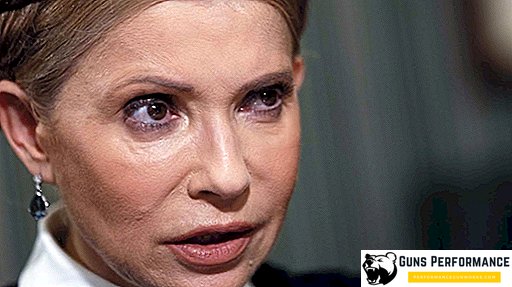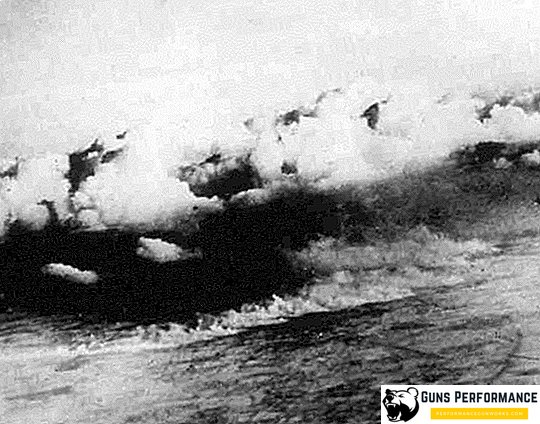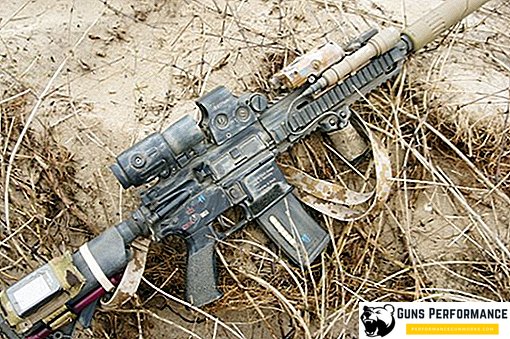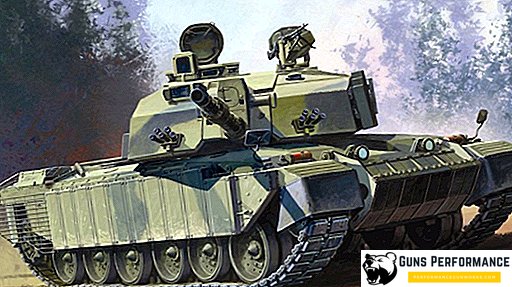The President of Georgia is the head of state and executive authority. According to the constitution, he is also the supreme commander of the armed forces. The head of state is elected for 5 years, and one person cannot hold this position for more than two terms in a row. The first president of Georgia in 1991 was Zviad Gamsakhurdia, but he was dismissed as a result of the military coup of 1991-1992. After that, the position remained vacant until 1995. Currently, the post of President of Georgia is George Teymurazovich Margvelashvili. He is the head of state since November 17, 2013.
The history of the Georgian state

The first mentions of the people who inhabited the lands of modern Georgia belong to the VII-VI centuries BC. It was then that the kingdom of Colchis appeared on the eastern lands. It was closely connected with the Greek trade colonies that emerged on the eastern shore of the Black Sea:
- Dioscuria;
- Fasis;
- Pitiount;
- Gyenos.
Ancient Colchis was closely associated with Greek culture. Mention of it can be found in ancient Greek myths, it was there that the Argonauts floated behind the Golden Fleece. Over the centuries, a rich state attracted various conquerors, whose main goal was to plunder and seize new lands:
- Toward the end of the second century BC, Colchis was seized by the Pontic kingdom;
- In the 1st century BC, all the territories of modern Georgia fell under the rule of the Roman Empire;
- At the end of the 4th century AD, all the lands that belonged to the disintegrated Colchis kingdom were conquered by the Laza state, which was dependent on Rome.
Since Rome’s ties with the Georgian states were very close, Christianity soon spread there, which spread throughout the territory of modern Georgia. After some time, Christianity was recognized as the state religion.
Georgian lands in the Middle Ages and under the rule of foreigners

When the power of the Roman Empire weakened, Sasanian Iran began an open expansion of the Caucasus region. The invaders could not cope with their task in the V century, since the Kartlian kingdom successfully resisted, especially under King Vakhtang I Gorgasal. In 523, the Sassanid Empire was able to seize Kartli, and they immediately abolished the royal power there, issuing a decree to put the Persian governor-marzpan on the throne.
In 562, when the war between Persia and Byzantium ended, the kingdom of Laz came under the authority of the Byzantine emperors. By the beginning of the 7th century, Kartli also fell under the influence of Byzantium.
Beginning in the middle of the 7th century, the troops of the Arab Caliphate appeared on the territory of modern Georgia, which managed to seize almost all the land. This lasted until about the beginning of the X century, and the Arabs actively tried to convert the local population to Islam. In the 10th century, the people's liberation movement intensified in Georgia, which ended with the liberation of the region, since the Arab Caliphate was significantly weakened by this time. After that, several feudal principalities formed in the territory of Georgia, which fought for power among themselves:
- Abkhazian principality;
- Kakheti;
- Tao-Klarjeti;
- Hereti;
- Kartli.
At the beginning of the XI century, their struggle ended in unification into one state under the rule of the Bagration dynasty. In the period from the XI to the XIII century, medieval Georgia reached its dawn. At the beginning of the 12th century, when the country was ruled by David IV the Builder, the Seljuk Turks were defeated, which allowed the country to seize Shirvan and Northern Armenia. In the XII century, Georgia established economic and political ties with Kievan Rus. These ties were strengthened when the son of Prince Andrei Bogolyubsky became the husband of Queen Tamara.
In the XIII century, the development of the entire Caucasus region was disrupted due to the Mongol invasion. Proud Georgians did not want to surrender to the invaders, which is why almost the whole country was plundered. Only some mountainous areas were able to hold on, approaching them was only through narrow mountain paths that could be held by a small army. In the XIV century, Timur's hordes came to Georgia and also plundered the region badly. All this led to feudal fragmentation, as the Georgian princes were constantly competing with each other. As a result, several strong principalities were formed:
- Kakheti;
- Kartli;
- Imeretian;
- Samtskhe Saatabaro.
In the XVI-XVII centuries, the Imeretinsky principality was split into 3 independent small principalities. The confrontation of the Ottoman Empire and Persia in the Transcaucasian region had a serious impact on the development of the Georgian principalities. In the 17th century, the Persians not only practiced the hijacking of the local population as slaves, but also practically cut off the remaining population of Kakheti and Kartli. The Ottoman Empire also did not differ in philanthropy, especially to the Gentiles. She was able to capture some of the originally Georgian territories, and the Ottoman military leaders did not disdain to send the Georgian population into slavery. Sensing that the Georgian principalities had weakened, the mountaineers from the northern regions of the Caucasus began to make regular raids, robbing everything that was left.
In the XVIII century, King Vakhtang VI was able to improve the position of Georgia, having made a number of reforms. But after the capture of Tiflis in 1723, the king had to flee with his family to Russia. In the second half of the 18th century, king Heraclius II managed to unite Kartli and Kakheti. Despite this, the constant aggression of neighbors and the constant military raids of the Lezgins forced the king to seek help from Russia.
Georgia as part of the Russian Empire in the XIX - early XX century

Political and friendly ties between Russia and Georgia were maintained in the Middle Ages. After the Mongol-Tatar invasion, they were temporarily severed, but soon the rulers managed to restore them, largely due to the efforts of the leaders of the Orthodox Church. Since the XVII century, the Georgian principalities have repeatedly appealed to Russia for help, offering to carry out a joint military campaign against Persia or the Ottoman Empire. For Russia, this proposal was unprofitable, since Georgia could not put up a strong allied army, fully relying on the combat power of its strong Orthodox neighbor.
Only at the end of the 18th century, when the Treaty of St. George of 1738 between the Kartli-Kakheti kingdom and Russia was concluded, did the situation radically change:
- Georgia recognized Russia as its official patron;
- Georgia abandoned its independent foreign policy;
- Russia guaranteed the country internal autonomy;
- Served as a guarantor of the integrity of the territories;
- Undertook to protect the Georgian lands in the event of war.
In addition, the Russian Empire promised Kartli-Kakheti to return all its ancestral lands, which were seized by Persia and the Ottoman Empire.
In the 19th century, the Russian Empire made a huge contribution to the development of the entire Transcaucasian Territory — it built a network of railways that connected the largest Georgian cities. In 1900, all Georgian railways were connected to the Russian transport network.
Georgia after the revolution in Russia

After the February Revolution of 1917, Georgia, like Russia, plunged into a maelstrom of political confusion. The Provisional Government was formed, but at the same time councils of workers, peasant and soldiers' deputies appeared, which took on a managerial role in major Georgian cities. Unlike Russia, the Mensheviks and Social Revolutionaries played the main role here. After the October Revolution, the Transcaucasian Commissariat was established in the country, which consisted of Mensheviks and other anti-Bolshevik parties. They negatively assessed the events taking place in Russia and suppressed the local small Bolshevik party.
In 1918, the Transcaucasian Seim was formed, which in April of the same year decided to secede from Russia and establish the Transcaucasian Democratic Federative Republic. In spite of good undertakings, this formation in 1.5 months fell into several separate states:
- Armenia;
- Georgia;
- Azerbaijan.
This happened because the leaders of each country wanted to manage the union on their own. In addition, the inclusion of Muslim Azerbaijan into the united republic was at least reckless.
An independent Georgian state was immediately attacked by Turkey, which violated the armistice agreement. To avoid defeat, the government of the Georgian Democratic Republic turned to Germany and then to Great Britain for help. Each of these countries pursued its own goals, so the country was robbed from all sides. In 1921, the Bolsheviks created the Revolutionary Committee, which announced the formation of the Georgian Soviet Socialist Republic, which made it possible to immediately seek help from the RSFSR. The Red Army quickly knocked out all the invaders and on February 25 occupied Tiflis.
The development of Georgia in the USSR

On May 21, 1921, a treaty was concluded between the RSFSR and the Georgian Soviet Socialist Republic, which provided for a comprehensive military-economic union. After this, the following events occurred:
- In 1922, the Constitution of the Georgian SSR was adopted;
- The Central Executive Committee of the Soviets was elected;
- In 1921, the Adjara ASSR was formed;
- In 1936 the country became part of the USSR as an independent union republic.
In 1937, the Supreme Council in the Georgian SSR became the Supreme Council, whose members were elected for 4 years. The authorities in the republic were no different from those in other republics of the Soviet Union and worked along the same lines.
The Great Patriotic War did not affect the territory of Georgia, but about 20% of the population were sent to the front, where about half of them died. USSR troops could not give way to the enemy of the Transcaucasian region, since there were huge oil fields that were vital to fascist Germany. Since 1944, many residents of Georgia belonging to other nations have been subjected to forced deportation:
- Meskhetian Turks;
- Greeks;
- The Kurds;
- Khemshins;
- Lazy and other nationalities.
Most of them were resettled in Central Asia. According to official data, the total number of deported people in the country reached 200,000. After the country recovered from the consequences of the war, the so-called "shadow economy" began to gain momentum in the country. Its dawn came in the 1970-1980s. It was not controlled by the authorities and led to an increase in corruption and crime throughout Georgia.
Formation of an independent Georgia

Starting in the late 1970s, human rights groups with a nationalistic orientation began to emerge in the country. The most famous leaders at that time were:
- Merab Kostava;
- George Chanturia;
- Zviad Gamsakhudriya.
Since the Soviet Union began the process of weakening power and liberalizing the system, nationalism in Georgia received general support. Most parties favored secession from the USSR and the formation of their independent republic.
In March 1991, a referendum was held in Georgia, at which they did not decide on the preservation of the USSR. The issue of independence of Georgia was on the agenda, which was supported by the majority of the population. In December 1991, a full-scale civil war broke out in the country between supporters of the first president of Georgia and government forces. In addition, the Georgian-South Ossetian conflict has not stopped in the country, which could only be stopped in 1992 with the help of Russian troops.
In 1995, Georgia adopted a new Constitution, which did not say anything about the legal status of South Ossetia and Abkhazia. The new president of the country was Shevardnadze, who was able to get more than 70% of the vote. After that, the country was relatively calm for several years, but in 1998 an armed insurrection broke out in one of the military units located in the city of Senaki. Government troops managed to quickly deal with it.
"The Rose Revolution" and the rule of Saakashvili

In the early 2000s, the situation of Georgia was unstable:
- South Ossetia and Abkhazia were not controlled by the government;
- Adzharia also practically did not obey;
- There was a protracted economic crisis in the country;
- Unemployment and poverty grew;
- The country existed for foreign loans, and they settled at the ruling elite.
These reasons led to the beginning of the “Rose Revolution” - a series of protests organized by the opposition led by Saakashvili. The strikers demanded the resignation of Shevardnadze and the revision of the results of parliamentary elections. As a result, the following events occurred:
- Early presidential elections were scheduled for January 4, 2004;
- The leader of Adjara declared that this revolution is an act of banditry, and declared himself commander-in-chief of the Ajarian military forces. At the same time, the border with Georgia was closed;
- At the election, Saakashvili was elected president, for which about 96% of voters voted.
The new authorities tried to rally the country under their leadership, which led to hostilities against South Ossetia. This operation was not crowned with success, since the Russian peacekeepers, joining the forces of the Ossetians and the Abkhazians, forced the Georgian army to retreat.
List of presidents of Georgia and features of executive power in the country

The list of presidents of Georgia begins in 1991. It was then that the country gained independence from the Soviet Union. Over the years, the following politicians have been in office:
- 1991-1993 year - Zviad Gamsakhurdia. On December 22, 1991, a revolt of a part of the National Guard was launched against him. From January 6, 1992, he was removed from power, although he was considered the president until 1993;
- 1995-2003 - Eduard Shevardnadze. In spite of the fact that officially the years of rule of this politician begin in 1995, in fact he led Georgia since 1992;
- 2003-2004 - Nino Burjanadze. Temporarily served as president;
- 2004-2007 - Mikhail Saakashvili. His inauguration took place in 2004, and then the president was supported by the majority of the population of Georgia;
- 2007–2008 - Nino Burjanadze. Saakashvili resigned at this time, submitting his candidacy to participate in the extraordinary presidential elections;
- 2008-2013 - Mikhail Saakashvili again became president. Before his departure, he carried out an unprecedented action - he announced that anyone who wishes could obtain Georgian citizenship by presenting only an identity document;
- 2013 is our time - Georgiy Margevelashvili. This statesman is very wary of Russia, claiming that she is the main source of danger in the region.
All recent events in Georgia, in connection with which this country is constantly trying to integrate as much as possible with the West, show that one should not expect a constructive dialogue between the Georgian and Russian sides in the near future.
Status and duties of the President of Georgia

At present, the president plays a key role in the political system of the Georgian state. He is the head of state and commander-in-chief of the country's armed forces. The powers of the head of Georgia are extremely broad:
- He must negotiate with foreign delegations;
- Sign and conclude international treaties;
- Appoint prime ministers;
- By order of the president may be given to the resignation of the government;
- The draft state budget also cannot be approved without the consent of the head of the country;
- May declare war and impose martial or state of emergency;
- Issue decrees and orders. They should not contradict the constitution of the country;
- Solve citizenship issues;
- Amnesty and pardon criminals.
It is also the responsibility of the head of Georgia to make decisions on granting political asylum to citizens of other countries.
Presidential residence and features of its architecture

The Presidential Palace, which is the official residence of the head of state, is located in Tbilisi. Это здание, где расположилась приёмная президента, было построено в 2009 году при Михаиле Саакашвили. Изначально, автором проекта являлся архитектор Георгий Батиашвили, хотя достраивал его итальянец Микеле Де Лукки. Дворец главы государства выглядит следующим образом:
- Это трёхпортиковое горизонтальное здание, имеющее оригинальный стеклянный купол;
- Рядом с ним имеется ещё одно здание в форме куба, в котором расположена канцелярия;
- Изначально планировалось три портика сделать с фронтонами, но позже было принято решение оставить их только в центральной части.
Архитектор Батиашвили отмечает, что передача проекта строительства к итальянцу произошла без его ведома, поэтому здание получилось не совсем таким, как было задумано изначально.












